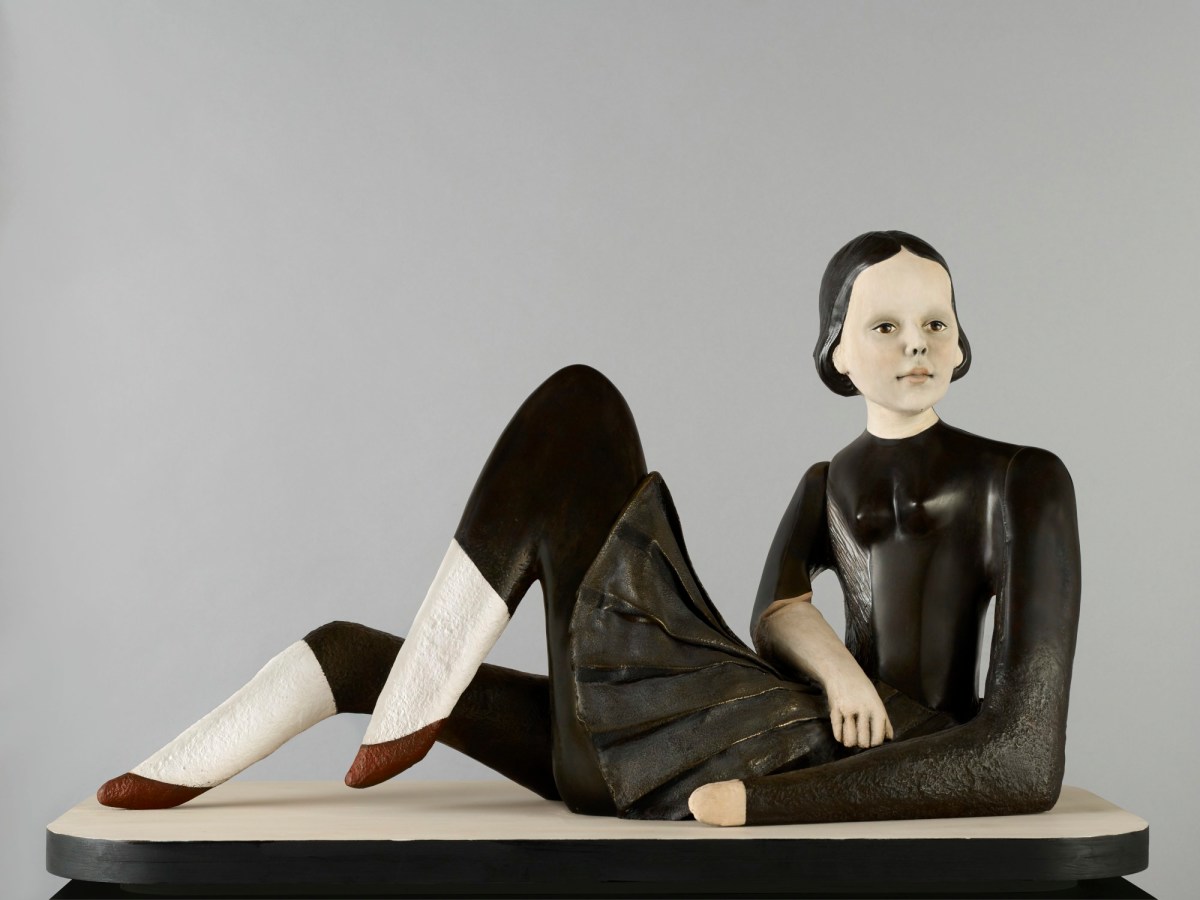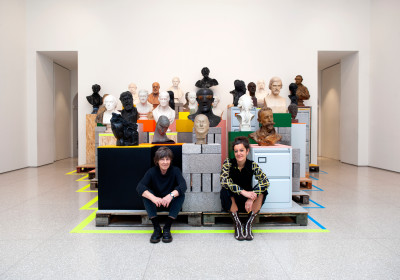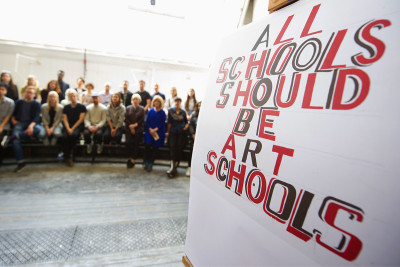
Cathie Pilkington RA, Reclining Doll, 2013.
Oil paint on patinated bronze. 430 mm x 770 mm x 400 mm, Weight: 33 kg. © Photo: Royal Academy of Arts, London. Photographer: Paul Highnam.
This image is not available to download. To licence this image for commercial purposes, contact our Picture Library at picturelibrary@royalacademy.org.uk

Cathie Pilkington RA, Reclining Doll, 2013.
Oil paint on patinated bronze. 430 mm x 770 mm x 400 mm, Weight: 33 kg. © Photo: Royal Academy of Arts, London. Photographer: Paul Highnam.
This image is not available to download. To licence this image for commercial purposes, contact our Picture Library at picturelibrary@royalacademy.org.uk
Reclining Doll, 2013
Cathie Pilkington RA (b. 1968)
RA Collection: Art
Cathie Pilkington RA is interested in objects that “pretend to represent something”. Her sculpture Reclining Doll is a Henry Moore-inspired figure in repose. With the realistic face of a doll and the body of a sinuous abstraction, Pilkington draws on iconic imagery and low-cultural objects, juxtaposing aesthetics of the sacred and the kitsch. “The doll is a perfect object to put lots of ideas into” says Pilkington. The uncanny figure evokes the animate and inanimate, familiar and unfamiliar.
“I’m really interested in those binary opposites. What’s soft, what’s hard, what’s fabric, what’s skin, what’s bronze, what’s cloth: all of those interests are in the work. I want to make an object that you want to look and look and look at… You see it first of all as an image and it’s quite sorted and then as you look it gives way to all these different difficulties”.
Pilkington often looks to shop window displays and mannequins.The girlish face with black bobbed hair evokes 1920s Art Deco. Clad in a black pleated dress, white socks and red slip-on shoes, the figure’s coquettish pose is a playful take on Moore’s faceless figure. One foot hovers delicately above the plinth like a dancer. A heavy left arm disrupts the illusion of feminine daintiness. This is not a light doll’s body, but a dense bronze body covered with oil paint.
Another source of inspiration for Pilkington was George Frampton’s Lamia, in the Royal Academy Collection (03/1723). Pilkington gave this piece as her Diploma Work, which artists are required to give when they are elected to the Royal Academy. It was important for her to give a piece that would be in dialogue with an existing artwork by quoting “the same material choices and the history of polychromatic sculpture”. To her, the use of bronze references the post-War period: “Sometimes I completely paint over the bronze and completely deny it but here it was purposefully kept as part of the content so the material and the content join up”.
Pilkington made some aspects of the sculpture and sourced others. She modelled the head in clay but sourced a kilt and chopped a hand off a doll. She made the limbs by stitching woollen blankets into a cylinder before filling it with plaster, resulting in bulbous shapes that are partially controlled and partially formed by chance. The entire sculpture was cast in bronze before being patinated and painted.
Quotes from unpublished interview with Cathie Pilkington 2017
Object details
430 mm x 770 mm x 400 mm, Weight: 33 kg



